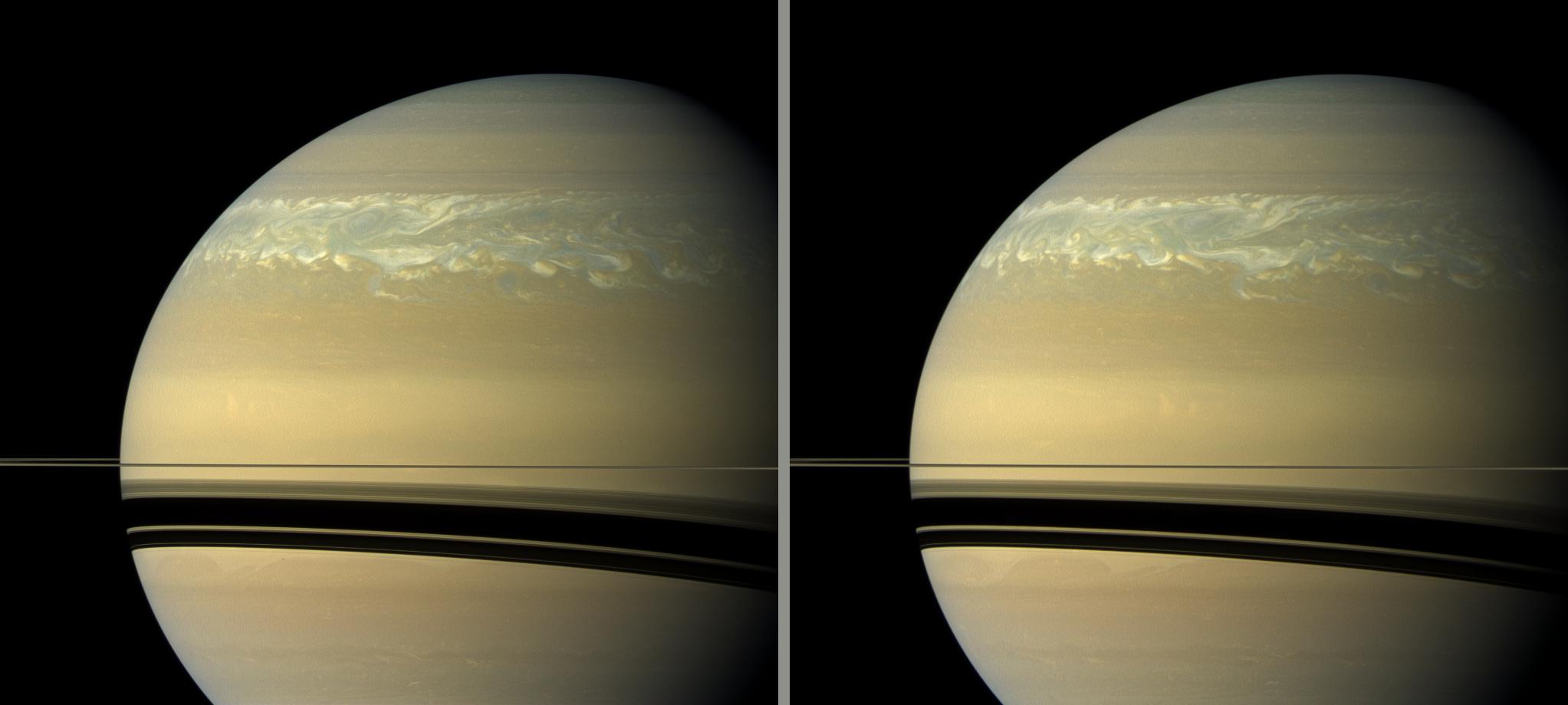Eleven Hours Later

| PIA Number | PIA14901 |
|---|---|
| Language |
|
These two natural color views taken 11 hours -- one Saturn day -- apart by NASA's Cassini spacecraft help scientists measure wind speeds in the huge storm seen here in the planet's northern hemisphere.
The view on the left is earlier than the view on the right. Scientists use these time-lapse images to track specific, small and sometimes subtle features in the clouds. The smallest features visible in the image are the most useful. However, tracking the clouds in this storm is difficult because the features don't always last one Saturn day.
See Encircling a Giant and Chronicling Saturn's Northern Storm to learn more about the size and development of this storm.
Images taken using red, green and blue spectral filters were combined to create these natural color views.
The images for the view on the left were acquired with the Cassini spacecraft wide-angle camera on Feb. 23, 2011, at a distance of approximately 1.1 million miles (1.8 million kilometers) from Saturn. The images for the view on the right were acquired with the Cassini spacecraft wide-angle camera on Feb. 24, 2011, at a distance of approximately 1.2 million miles (1.9 million kilometers) from Saturn.
Image scale is 64 miles (104 kilometers) per pixel in both views.
The Cassini-Huygens mission is a cooperative project of NASA, the European Space Agency and the Italian Space Agency. The Jet Propulsion Laboratory, a division of the California Institute of Technology in Pasadena, manages the mission for NASA's Science Mission Directorate in Washington. The Cassini orbiter and its two onboard cameras were designed, developed and assembled at JPL. The imaging team is based at the Space Science Institute, Boulder, Colo.
For more information about the Cassini-Huygens mission visit http://saturn.jpl.nasa.gov or http://www.nasa.gov/cassini . The Cassini imaging team homepage is at http://ciclops.org .
Credit: NASA/JPL-Caltech/Space Science Institute
